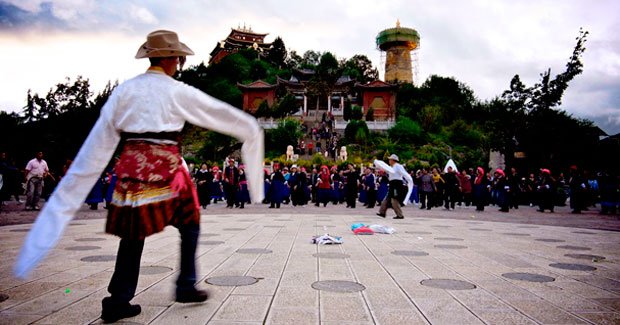Searching for Shambhala


FOR SOME IT REPRESENTS a mystical kingdom revealing itself only to enlightened ones, while for others it is a symbol of the hidden treasures of the mind. One way or another, Shambhala remains a living belief for many.
I first heard about this fascinating myth back in 2006 while passing through a small town not far from Lhasa, the old political and spiritual capital of Tibet. There is a building in this town which some believe might hold the key to the physical location of a hidden valley buried deep within the Himalayas: Shambhala.
Scripts going back 1000 years describe Shambhala as a kingdom which exists in order to preserve the knowledge and wisdom of humanity until such a time when the world has decayed through greed and war, and according to the scripts the year will be 2425 AD. At that time, the Kingdom of Shambhala will emerge and spawn a new golden age of 1000 years using the treasures of Shambhala to help rebuild the world.
English writer James Hilton would certainly have used elements of Shambhala when penning his novel, Lost Horizon (1933), which popularised the idea of a hidden paradise in the Himalayas. Hilton’s Shangri-La tells the story of a community of people living in harmony with one another, free from hunger, illness, and violence – qualities that are shared with many myths around the world but especially akin to that of Shambhala.
For years, western explorers and documentary makers have sought to find the location of Hilton’s Shangri-La, a place created in an authors mind. In 2002 it seemed that at last the search was over – Beijing announced that Shangri-La had been discovered in China. Not only does Shangri-La exist, but there is a bitumen highway taking you there and if you’re in a hurry to reach paradise on Earth, you can even fly.

Journey to find Shambhala and Shangri-La
My journey begins in China where the stories of Shangri-La and Shambhala have merged as one and the same. I’ll be asking how the governors of Yunnan province discovered the location of Hilton’s Shangri-La, and whether or not by default they accidentally found Shambhala?
I’ll be following the remote mountain trails of the early 1920’s Botanist, Joseph Rock, who explored much of the Yunnan and Sichuan provinces in the 1920-50’s. Hilton may well have used some of Rock’s reports and groundbreaking photography while painting the story for Lost Horizon.
The story of Shambhala has travelled far and wide with many interpretations over the years. From Germany to Russia, Mongolia to the Bhutan, references to Shambhala can be found all across the Himalayas and beyond. But maybe we’re missing the point, could Shambhala be a guide to an inward journey facing our own hidden fears, desires and habits?
Armed with a mountain bike, several inaccurate Chinese maps and a story, I was told in a small town outside of Lhasa, I ride north to the Tibetan border. From here I’ll be heading west along the mighty Himalayan spine to Bhutan and India, the birthplace of the Kalachakra teachings where Shambhala is mentioned for the first time.
RELATED STORIES

